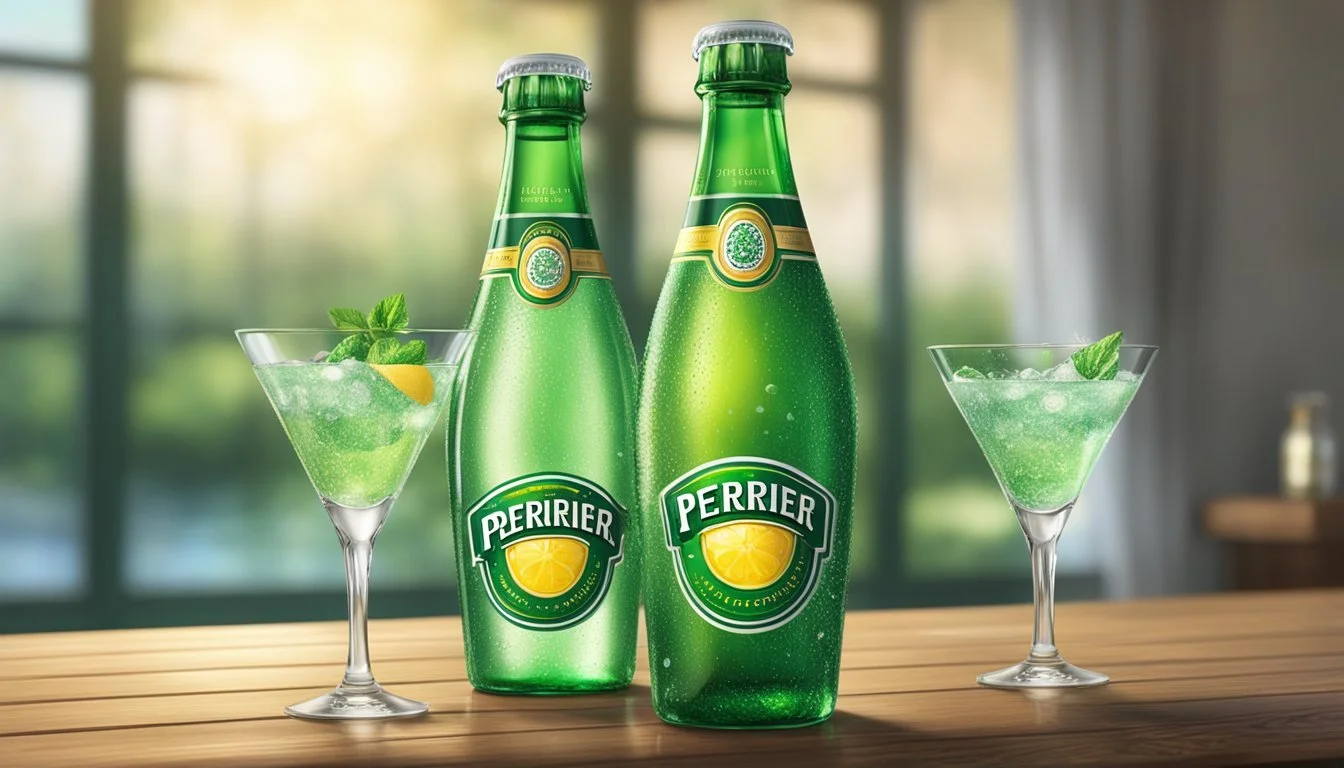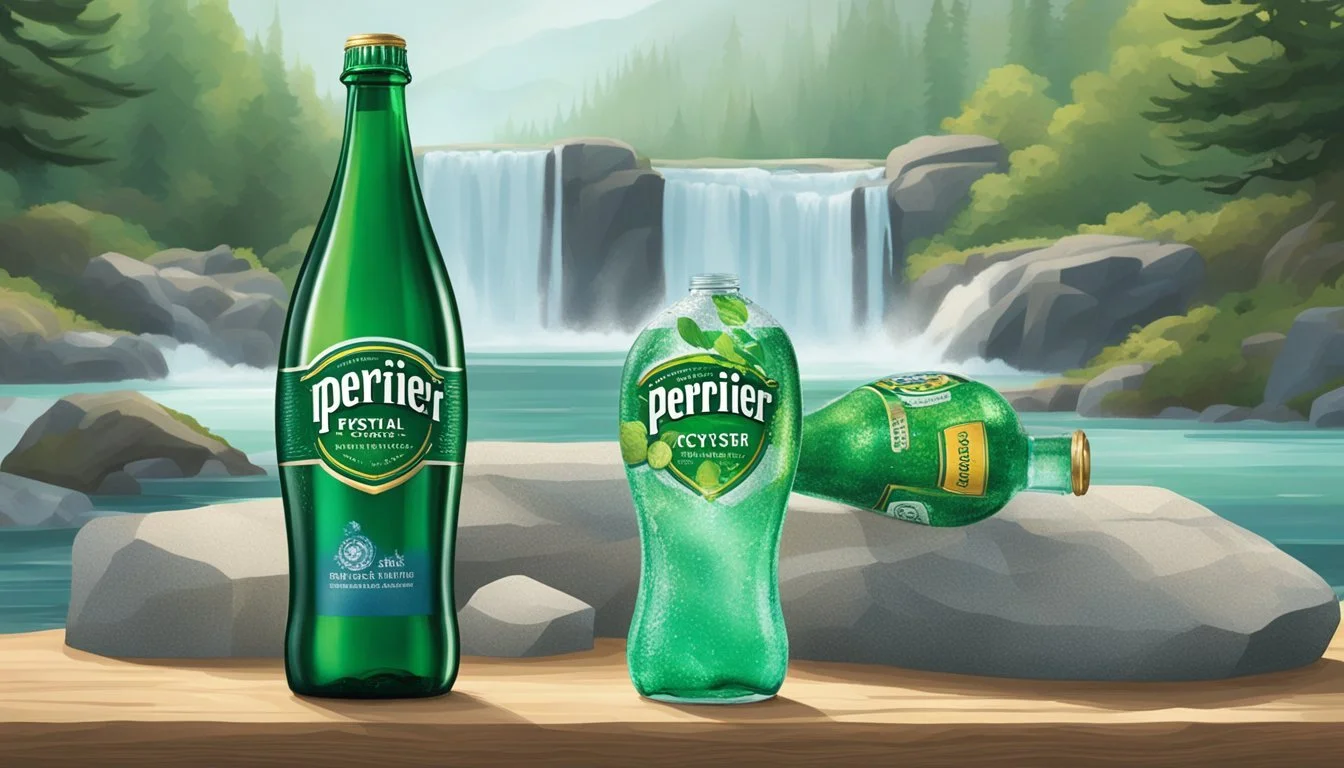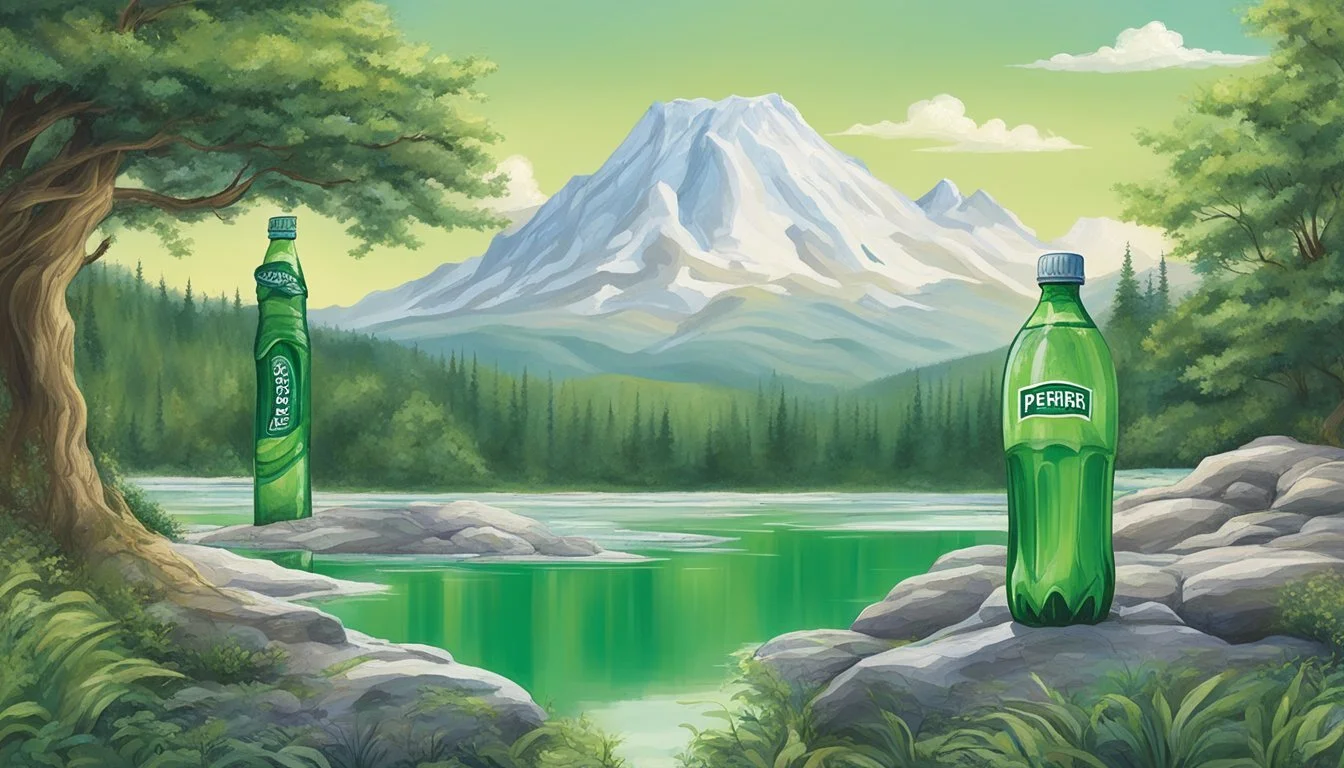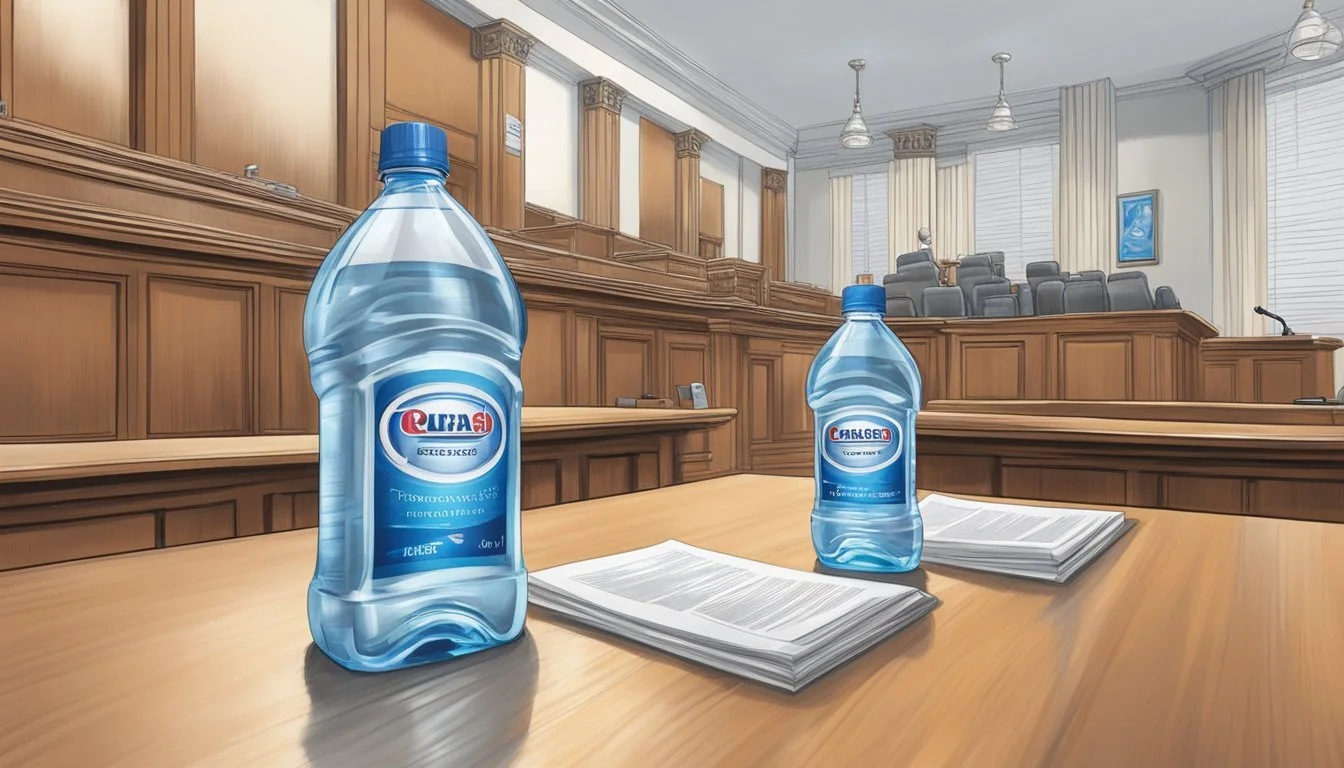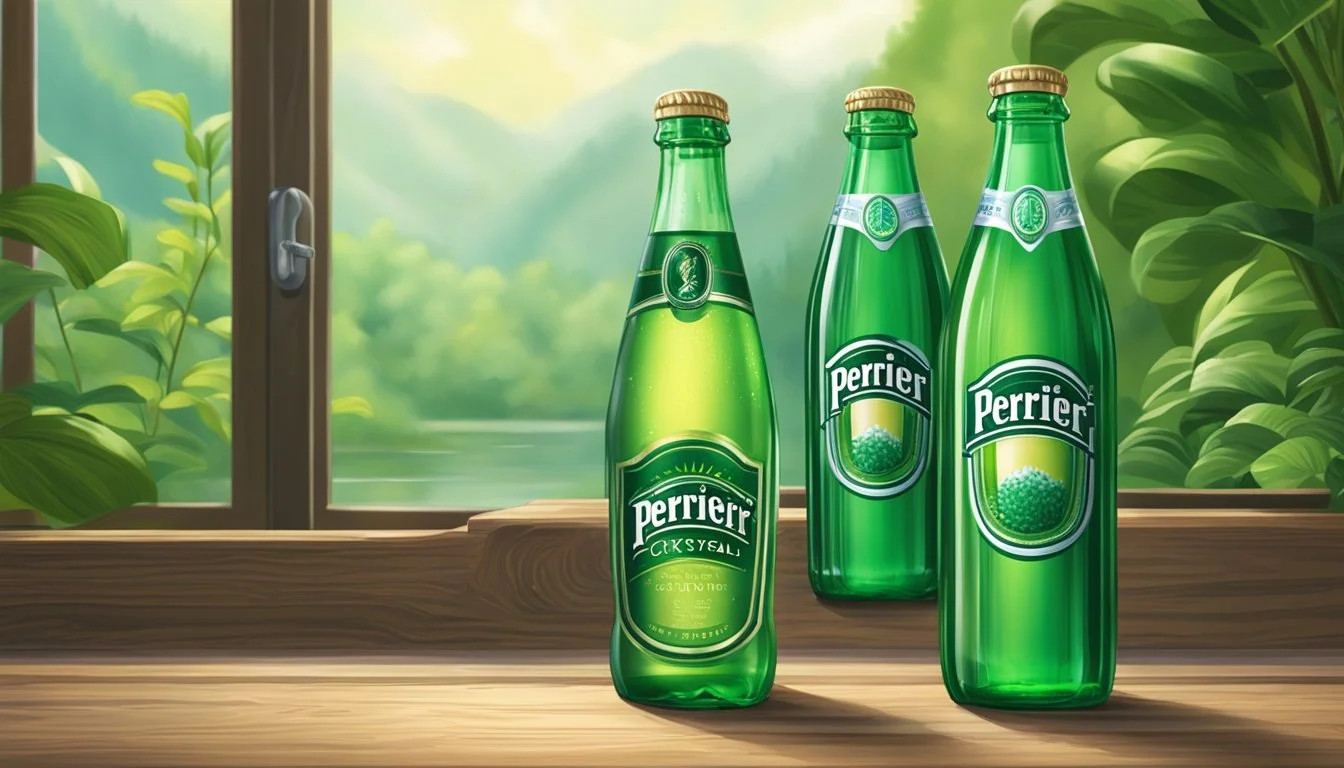Perrier vs. Crystal Geyser
Detailed Comparison of Bottled Water Brands
Choosing between Perrier and Crystal Geyser bottled water depends on what you value in your drinking water. Perrier offers a distinct sparkling experience with its natural carbonation and has become a benchmark for carbonated mineral waters. On the other hand, Crystal Geyser provides still water sourced from natural springs, appealing to those who prefer their water without bubbles.
Perrier, originating from France, is renowned for its unique fizz and mineral content, making it a favorite for those who enjoy a refreshing, effervescent beverage. Crystal Geyser, sourced from various spring locations in the United States, focuses on providing pure, still water that is free from additives.
While Perrier's sparkling nature might make it more suitable for social occasions and as a mixer, Crystal Geyser’s straightforward approach to still water is ideal for everyday hydration needs. When it comes to purity and flavor, both brands deliver quality, though the choice ultimately hinges on whether you prefer sparkling or still water.
Understanding Bottled Water
Bottled water choices can vary significantly in terms of source, purity, and safety standards. To make an informed decision, it’s crucial to explore the origins, regulatory criteria, and trends in consumption of bottled water.
Sources and Types of Bottled Water
Bottled water comes mainly from two sources: spring water and purified water.
Spring water is collected from natural springs and is often marketed as naturally pure. Brands like Crystal Geyser emphasize their water's spring origin, which appeals to consumers seeking natural hydration.
Purified water, in contrast, comes from municipal sources and is treated to remove contaminants. This type is preferred by those concerned about impurities, even if its origin is less glamorous.
Health and Safety Standards
The EPA and FDA set rigorous standards for bottled water to ensure safety and health. Bottled water must be free from contaminants like lead and microplastics, and its packaging must comply with strict regulations.
Compliance is crucial as some brands have been found with elevated levels of PFAS chemicals. Consumers should check their bottled water labels for detailed information on water quality and source.
Bottled Water Consumption Trends
The demand for bottled water has surged, driven by health-conscious consumers and the perception of higher purity compared to tap water. Brands like Perrier and Crystal Geyser are popular due to their distinct taste profiles and trusted origins.
Trends indicate a growing preference for bottled water over sugary drinks and public concern over tap water safety. This shift underscores the importance of understanding the bottled water's origin and health benefits.
Comparative Analysis: Perrier vs. Crystal Geyser
Perrier and Crystal Geyser offer distinct advantages depending on consumer preferences for origin, production process, and distinctive features. Both brands have garnered popularity for their unique approach to bottled water.
Brand History and Origin
Perrier originated in Vergèze, France, with a history dating back to 1863. Discovered by a Roman emperor, the spring has been commercially bottled for over a century. Perrier is synonymous with upscale carbonated water, emphasizing elegance and sophistication.
Crystal Geyser emerged more recently in California, USA, beginning operations in 1990. Known for its focus on affordable, naturally sourced spring water, it has multiple plants, but the most prominent source is in Olancha, California.
Source and Production Process
Perrier draws its water from a natural spring in southern France. This water naturally carbonated at the source is filtered to maintain purity while preserving its characteristic bubbles and mineral content.
Crystal Geyser sources water from various springs, including the Sierra Nevada Mountains in California and Mahoosuc Mountain in Maine. The water is minimally processed, retaining a fresh, clean taste often attributed to alpine spring water origins.
Unique Selling Propositions
Perrier's key selling points include its naturally carbonated water and iconic green bottles, which appeal to eco-conscious consumers. The brand promotes a sophisticated lifestyle and offers various flavors while maintaining its core product.
Crystal Geyser emphasizes affordability and sustainability. Their packaging claims reduced environmental impact, while their spring water promises a crisp, refreshing taste free from artificial carbonation. This brand targets those seeking budget-friendly yet high-quality bottled water options.
In summary, Perrier offers a premium, effervescent experience rooted in French heritage, whereas Crystal Geyser provides an accessible, natural spring water option with a strong focus on sustainability.
Quality and Taste Profile
When comparing Perrier and Crystal Geyser, examining their quality and taste profiles—including aspects like pH levels, mineral content, and palate experience—can offer clear insights into which might better suit different preferences.
PH Levels and Mineral Content
The pH level of bottled water can influence both health benefits and taste. Perrier typically has a pH level of around 5.5, making it slightly acidic, which some consumers might prefer for its crispness. It also contains notable minerals such as calcium and magnesium, which contribute to its unique taste profile.
Crystal Geyser, on the other hand, usually has a pH level closer to neutral, around 7.0. This brand emphasizes its naturally occurring minerals, boasting key elements like calcium and magnesium that add to its smoothness. Comparing these, those who prefer a milder taste may lean towards Crystal Geyser, while those seeking a bit more zest might enjoy Perrier.
Flavor and Palate
Perrier is renowned for its iconic sparkling nature, which brings a refreshing bite complemented by its mineral content. Water sommeliers often describe it as having a clean, effervescent taste that pairs well with food, thanks to its distinctive bubbles and slight mineral tang.
Crystal Geyser, primarily available in still form, offers a more subdued flavor. Its natural spring source imparts a mild, fresh taste free from artificial sweeteners or preservatives, making it a favorite among those who enjoy a pure, uncomplicated drink. Unlike Perrier, Crystal Geyser provides a soft, easy-drinking experience that aligns well with everyday consumption.
When comparing these two, it's clear that the choice boils down to personal taste preferences—whether you favor the sparkling character of Perrier or the smooth, natural taste of Crystal Geyser.
Environmental and Ethical Considerations
Both Perrier and Crystal Geyser have their distinct approaches to addressing environmental and ethical concerns. Key areas of focus include packaging sustainability and water resource management.
Packaging and Sustainability
Perrier primarily uses glass bottles, which are recyclable and reduce plastic waste. Packaging in glass is seen as more sustainable due to its recyclability and lesser environmental impact in comparison to plastic.
On the other hand, Crystal Geyser often utilizes plastic bottles, which contribute to environmental problems such as global warming due to low recycling rates. While efforts in providing boxed water options and promoting higher recycling rates are part of their practices, the challenge in improving plastic management remains substantial. Consumers concerned with sustainability often prefer Perrier due to its glass packaging.
Water Resource Management
Perrier sources its water from naturally occurring mineral wells in France. This method involves sustainable water management practices focusing on reducing over-extraction and preserving natural water levels. The company is actively engaged in responsible resource management to balance usage and conservation.
Crystal Geyser sources water from various wells in the United States. There have been discussions around their impact on local water supplies. Ethical considerations include ensuring the sustainability of their sources and minimizing any negative impact on local communities. Balanced water extraction practices are essential to maintain both the quantity and quality of available water resources.
Health and Safety Considerations
When assessing Perrier and Crystal Geyser bottled water, it's essential to consider health and safety aspects. This includes comparing bottled water to tap water and identifying potential risks associated with consuming bottled water.
Bottled Water vs. Tap Water
Both Perrier and Crystal Geyser offer benefits over tap water. Many people prefer bottled options believing they undergo more rigorous purification. Perrier, being a naturally carbonated mineral water, is sourced from France and often appreciated for its purity.
Crystal Geyser, on the other hand, markets itself as spring water, sourced directly from the earth without artificial enhancements. However, tap water in many municipalities in the United States meets EPA standards for safety. It is regularly tested for contaminants including lead and other harmful substances.
Comparing bottled water brands like Perrier and Crystal Geyser to tap water, it's crucial to note that many bottled water brands such as Smartwater, Lifewtr, and Poland Spring are also subjected to stringent quality controls. Despite this, concerns remain about the presence of microplastics in bottled water, which are less likely to be found in tap water.
Potential Risks of Bottled Water
Various health risks are linked to bottled water. A Consumer Reports investigation showed that some brands, including Perrier and Crystal Geyser, may contain contaminants such as PFAS chemicals. These chemicals, found in several popular brands, have been linked to serious health issues such as cancer and other chronic illnesses.
The presence of microplastics is another significant concern. Studies have shown that 93% of bottled water contains microplastics, potentially posing unknown long-term health risks. While brands like Arrowhead, Voss, and Icelandic Glacial market their water as premium, they are not immune to such contamination.
Relatively, tap water, being frequently monitored by the EPA, can be a safer option when it comes to chemical pollutants. Despite perceptions of bottled water being purer or safer, consumers must weigh these potential risks, including exposure to contaminants for maintaining optimal health.
Market Landscape
The bottled water market is diverse, with numerous brands vying for consumer attention through unique selling points, quality, and brand loyalty. In comparing Perrier and Crystal Geyser, it’s essential to understand the broader landscape they operate within.
Major Players and Alternatives
The bottled water market includes a range of major players and alternatives. Brands like Deer Park, Mountain Valley, and Nestlé Pure Life are prominent alongside Perrier and Crystal Geyser. Perrier, renowned for its sparkling mineral water and distinctive green bottles, often competes with La Croix in the sparkling segment.
Aquafina and Dasani, known for their purified drinking water, dominate another significant market segment. Premium brands like Evian, Fiji, and Smartwater cater to consumers seeking higher-end options with specific taste and purity profiles. Each brand has crafted a distinct identity, which influences consumer choices and positions within the market.
Consumer Preferences and Trends
Consumer preferences in the bottled water market are influenced by factors such as taste, water source, and health benefits. Many consumers choose Perrier for its effervescence and mineral-rich content, appealing to those who enjoy sparkling water with a touch of sophistication. Crystal Geyser attracts customers with its claimed natural spring sources and affordability.
Trends show an increasing demand for environmentally friendly packaging and transparent sourcing practices. Health-conscious consumers often opt for brands like Smartwater or Fiji for their perceived purity and electrolyte content. The market is dynamic, driven by changing tastes and the growing awareness around sustainability and health issues.
Legal and Regulatory Landscape
This section explores the key regulatory standards governing bottled water, along with recent controversies surrounding the industry. Understanding these legal frameworks and disputes is essential for assessing the safety and quality of brands like Perrier and Crystal Geyser.
Bottled Water Regulations
Bottled water in the United States is primarily regulated by the Food and Drug Administration (FDA), which sets standards for source water, labeling, and manufacturing practices. The Environmental Protection Agency (EPA) oversees tap water standards, which can influence regulatory perspectives on bottled water quality.
State regulations can vary; for example, California, Maine, and Florida have additional guidelines to ensure safety and quality. The International Bottled Water Association (IBWA) also provides voluntary standards that members must follow, often exceeding federal requirements.
The FDA mandates specific labeling for bottled water types, such as spring, purified, and mineral water. It also requires regular testing for contaminants and adherence to Good Manufacturing Practices (GMP). Despite these regulations, some studies have raised concerns about the presence of chemicals like PFAS in bottled water, creating a growing demand for stricter oversight.
Recent Litigations and Controversies
Recent years have seen several litigations and controversies surrounding bottled water brands. Crystal Geyser faced scrutiny for alleged contamination of arsenic in water bottled at its California facility, leading to fines and mandatory corrective actions. States like New York and Michigan have also seen heightened investigations into water quality issues.
Perrier, owned by Nestlé Waters, has been involved in disputes over water extraction rights, particularly in drought-prone areas of California. These controversies have sparked public debates on the environmental impact of bottled water companies.
Consumer watchdogs and media reports, like those from Consumer Reports, have highlighted the presence of toxic substances in bottled water. Such findings have often led to class-action lawsuits and demands for more transparent sourcing information.
Legal battles and regulatory scrutiny continue to shape the landscape of the bottled water industry, pushing companies toward greater accountability and compliance with health and safety standards.
Conclusion
When comparing Perrier and Crystal Geyser, they each serve different consumer preferences and needs.
Perrier is well-known for its sparkling mineral water, catering to those who enjoy a fizzy experience. It stands out for its distinctive bubbles and slightly tangy flavor. For consumers looking for an alternative to sodas or other carbonated drinks, Perrier offers a refreshing option.
Crystal Geyser, in contrast, provides still (non-carbonated) water. It's valued for its clean taste and smoother drinking experience. Crystal Geyser sources its water directly from natural springs in the western U.S. and Canada, emphasizing a more straightforward hydration choice without any added carbon dioxide.
Environmental Considerations:
Perrier: Uses glass bottles which are recyclable but come with a higher carbon footprint due to production and transport.
Crystal Geyser: Often packaged in plastic bottles, raising concerns about plastic waste, although some efforts are being made towards sustainability.
Both brands offer hydration solutions but cater to different preferences. Perrier is ideal for consumers seeking a sparkling touch, while Crystal Geyser appeals to those who prefer non-carbonated, spring water. Both play vital roles in the bottled water market, offering diverse choices to meet various needs.
More About Perrier
Icelandic Glacial vs Perrier: Which Bottled Water is Better?
Mountain Valley Spring Water vs Perrier: Which Bottled Water is Better?
Perrier vs Kirkland Signature: Which Bottled Water is Better?
Perrier vs Richard's Rainwater: Which Bottled Water is Better?
Perrier vs Whole Foods Italian Still Mineral water: Which Bottled Water is Better?
More About Crystal Geyser
Acqua Pana vs Crystal Geyser: Which Bottled Water is Better?
Alkaline88 vs Crystal Geyser: Which Bottled Water is Better?
Aqua Carpatica vs Crystal Geyser: Which Bottled Water is Better?
Boxed Water vs Crystal Geyser: Which Bottled Water is Better?
Cascade Mountain vs Crystal Geyser: Which Bottled Water is Better?
Castle Rock vs Crystal Geyser: Which Bottled Water is Better?
Core Hydration vs Crystal Geyser: Which Bottled Water is Better?
Crystal Geyser vs CBD Living: Which Bottled Water is Better?
Crystal Geyser vs Crystal Lake: Which Bottled Water is Better?
Crystal Geyser vs Essence pH10: Which Bottled Water is Better?
Crystal Geyser vs Kirkland Signature: Which Bottled Water is Better?
Crystal Geyser vs Open Water: Which Bottled Water is Better?
Crystal Geyser vs Proud Source: Which Bottled Water is Better?
Crystal Geyser vs Richard's Rainwater: Which Bottled Water is Better?
Crystal Geyser vs Simple Truth: Which Bottled Water is Better?
Crystal Geyser vs Talking Rain AQA: Which Bottled Water is Better?
Crystal Geyser vs Weird Water: Which Bottled Water is Better?
Crystal Geyser vs Whole Foods 365: Which Bottled Water is Better?
Hawaii Volcanic vs Crystal Geyser: Which Bottled Water is Better?
Hawaiian Springs vs Crystal Geyser: Which Bottled Water is Better?
Ice Mountain vs Crystal Geyser: Which Bottled Water is Better?
Icelandic Glacial vs Crystal Geyser: Which Bottled Water is Better?
Just Water vs Crystal Geyser: Which Bottled Water is Better?
Liquid Death vs Crystal Geyser: Which Bottled Water is Better?
Mountain Valley Spring Water vs Crystal Geyser: Which Bottled Water is Better?
Nestle Pure Life vs Crystal Geyser: Which Bottled Water is Better?
Poland Spring vs Crystal Geyser: Which Bottled Water is Better?
Purely Sedona vs Crystal Geyser: Which Bottled Water is Better?
San Pellegrino vs Crystal Geyser: Which Bottled Water is Better?
Smartwater vs Crystal Geyser: Which Bottled Water is Better?
Solan de Cabras vs Crystal Geyser: Which Bottled Water is Better?
Topo Chico vs Crystal Geyser: Which Bottled Water is Better?
Whole Foods Italian Still Mineral water vs Crystal Geyser: Which Bottled Water is Better?
Zephyrhills vs Crystal Geyser: Which Bottled Water is Better?

